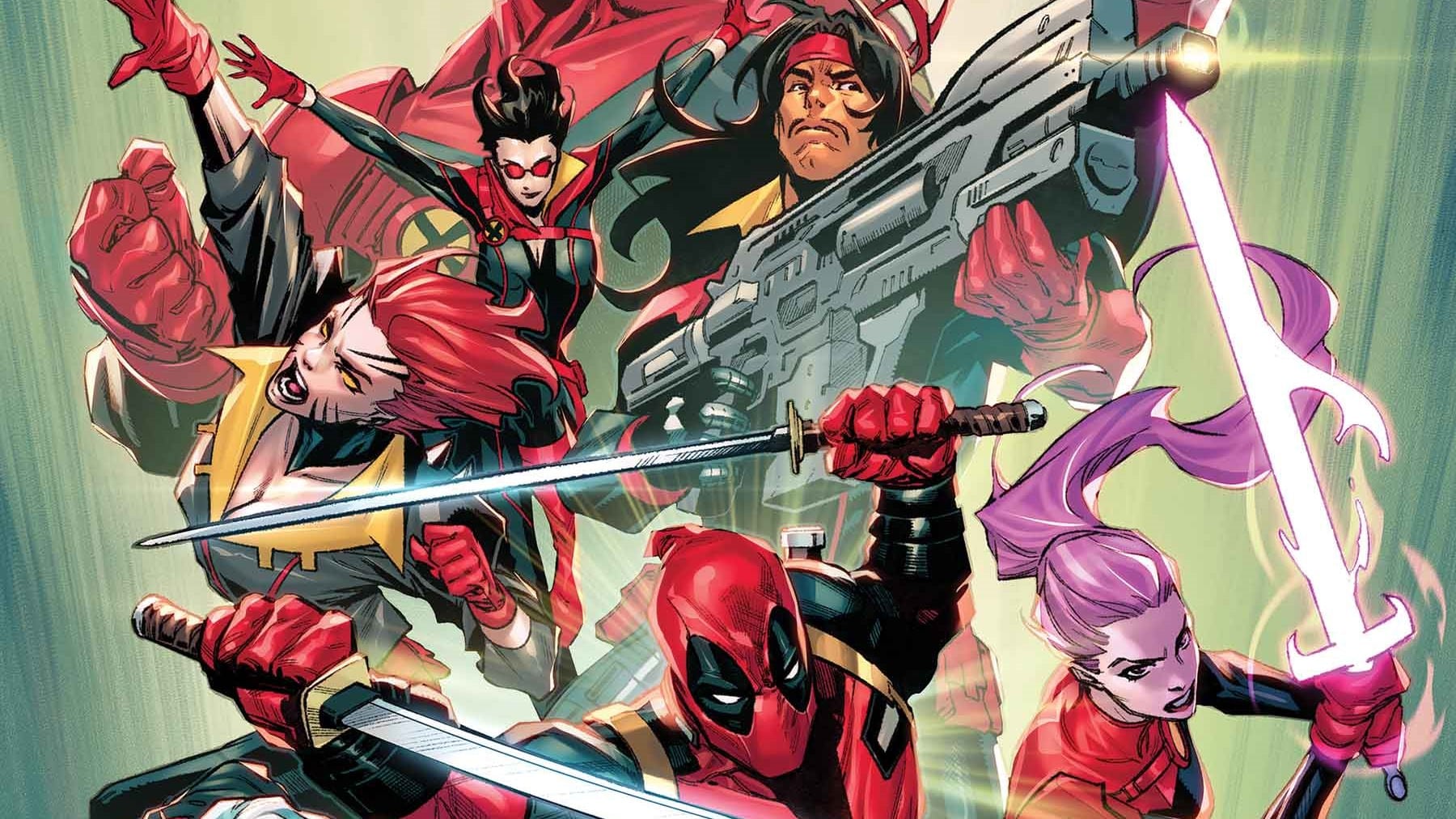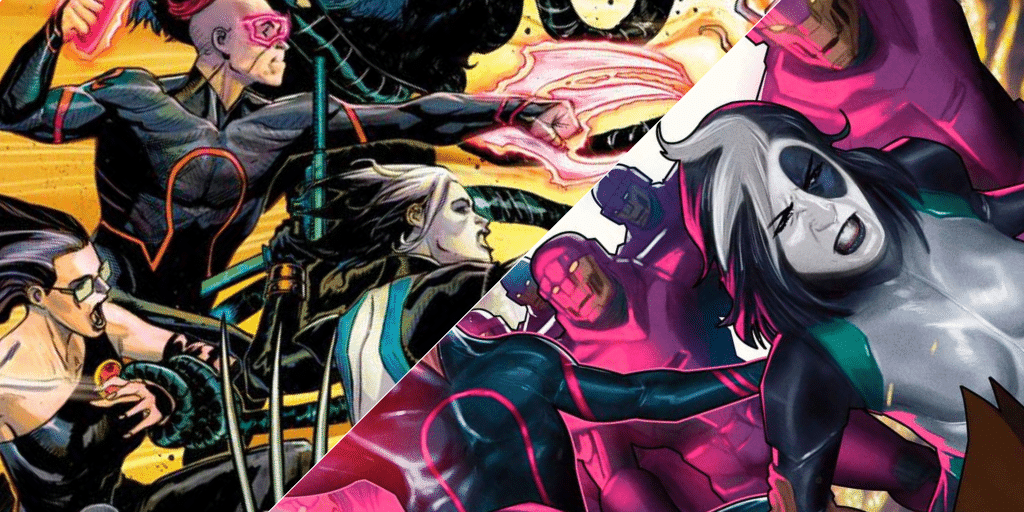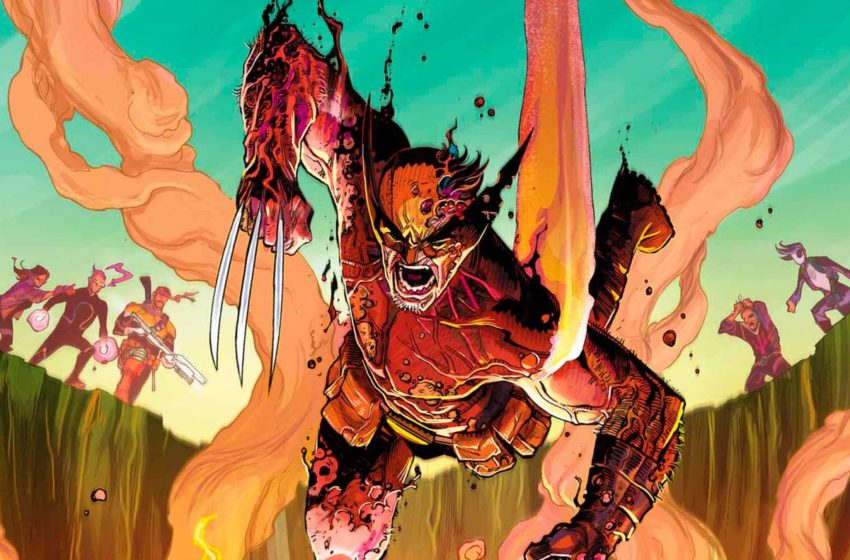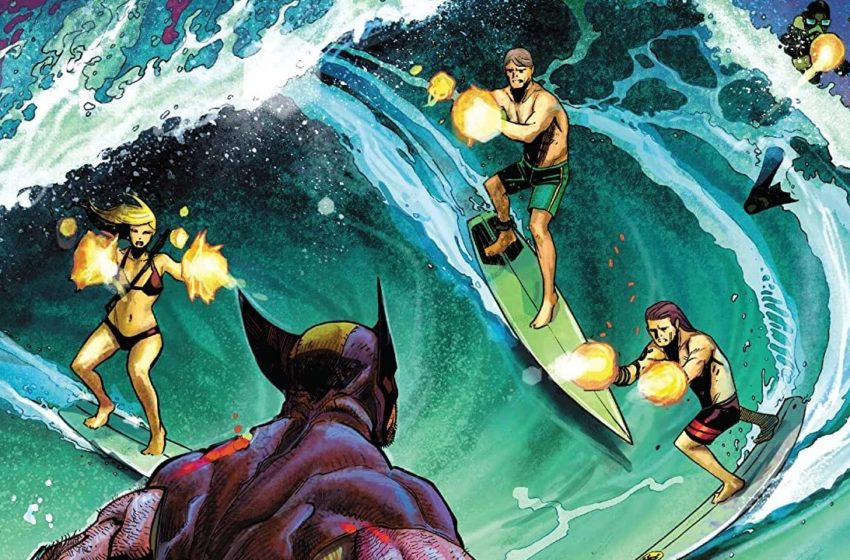The world is fractured. Forge uses his powers of invention to devise the only fix: an all-new, all-different X-Force — Askani, Captain Britain, Sage, Surge and newcomer Tank — in off-the-books missions so dire, so integral to the fate of the Marvel Universe, there’s no time to stop for permission. X-Force #1 is written by Geoffrey Thorne, penciled by Marcus To, colored by Erick Arciniega and lettered by Joe Caramagna.
Mutant CIA. Wet work unit. Misfit teens. X-Force has been many things over its 35 years of publication history. Its meaning is malleable, bending to writers’ whims in their framing of mutants within the political context of the time. It’s also a great excuse to show extreme violence and totally radical dudes with big guns. Sometimes that’s all it is. But I digress.
The thread that binds the most notable X-Force runs together is an interrogation of ethics, and having a strong point of view is critical with this title because of its flexible meaning. For example, Beast holding the power of a mutant government intelligence service and inevitably descending into moral bankruptcy was what made Ben Percy’s run fascinating; the madness of Rick Remender’s Uncanny X-Force spiralling from one heinous act that could never be undone kept that story focused on an ethical conundrum. Even the original, in its chaotic and convoluted way, is interested in the efficacy of a Mutant Liberation Front in the face of mutant oppression. And so on.
This isn’t to be prescriptive about what properties or characteristics an X-Force story should have. Although I doubt it’d get greenlit today, the road trip era of John Francis Moore’s run proves that if the vibes are strong enough, you can make just about anything work. That though, is the exception that proves the rule. This isn’t.
X-Force Assemble

What X-Force #1 lacks in a compelling premise it makes up for in the sheer amount it jams in, and some of it works. The issue and its lead character are busy, with seven separate locations continually propelling the narrative forward as Forge travels the globe constructing his team. The fight sequences are a melee of limbs and quippy retorts in the way you’d want from an action-first book, and everything is rendered beautifully by the Excalibur (2019) art team of Marcus To and Erick Arciniega. The scene at Braddock Manor between Betsy, Rachel and Forge is a particular highlight. To’s pencils inject so much personality into the scene through the couple’s body language and facial expressions, and Thorne’s dialogue contrasts them beautifully. Their motivations cut across one another without creating discord between them; they’re funny but in different ways, and the page just sings. The problem is that the issue is putting the cart before the horse. Yes, there are a few good moments, but I can’t help but ask myself: What’s this X-Force team all about?
The purpose of this iteration of X-Force is to combat “fractures” in the world identified by Forge’s latest doohickey and preemptively solve them. The opening sequence suggests the events are random, although if there is a mystery as to what connects them, it just doesn’t feel significant. This is largely a function of the scattergun approach of the From the Ashes relaunch. There’s no wider “mutant story” for X-Force to engage with, or respond to. Thorne and To are responsible for divining a reason this X-Force team should even exist in the first place, or why we should be invested in their story, out of a hologram of Hank McCoy. This issue just didn’t do that for me. It’s not enough to list off a bunch of random places just so the team has something to fight every month. We’ve all read a million stories like that. I need to know: Why this fight? Why these people? What do they have to gain and lose? In this issue it feels to me like each of the characters is doing it because it’s what they’ve always done.
After the opening quarter establishes the premise, the rest of the issue launches headfirst into the mission while introducing the cast of seven characters. Simply put, it tries to do too much, and as a consequence, the character voices feel flat. The characters serve the mission rather than the other way around, which isn’t ideal from a first issue. The mission that brings the team together is solved really by two characters. Despite appearances, Forge has everything in hand. He’s brought Deadpool along to be ingested by the goo monster threatening Sorachi-Shi, his cancer infecting its insides over the course of three weeks. As a mission resolution, this is great. The problem is that it renders the other characters superfluous. Because we’re getting snippets of the other characters performing feats that ultimately don’t matter, the issue ends abruptly without reaching crescendo, and it’s onto the next mission. This is intended to be a feature, but for me it’s a bug.
Not the real McCoy

While the characterization falls flat in the more action-packed sequences, the moments dedicated to exploring Forge and Sage’s current states of mind are a little bolder, even if the results are mixed. Forge finds himself seeking a new purpose after Krakoa and, through “Project McCoy,” is able to augment his powers to create a device that allows him to sense threats before they emerge. The allusion to the previous X-Force chief is not subtle, with a literal hologram of pre-fur Hank McCoy lamenting his fate as a visible mutant framing the beginning of Forge’s journey. It’s clear as we see Forge almost break himself apart trying to achieve this upgrade that Thorne is establishing the parallel between Forge and Beast, suggesting that a moral fall is a very real risk for our intrepid leader. This beat is effective if not novel. His passion for discovery, to test the bounds of his abilities (He is striving for Omega status here) is his hamartia. It’s central to the character’s pathology and has come up before (see “Lifedeath” as the most prominent example), but this element has the potential to be fascinating. Not only does this play into Forge’s fatal flaw, but there are potential moral implications of the device itself. It’s essentially a Minority Report situation, which could be interesting to see play out.
Sage’s story, on the other hand, fills me with dread. It picks up in a mental health treatment facility in Switzerland at the tail end of a mental breakdown that happens off page as Forge seeks to recruit her to his cause. Reeling from the end of Krakoa, Forge finds her practically speaking in tongues. After little more than the mention of a new mission and the presentation of a magical orb, she’s suddenly cured. Now I hate to compare every From the Ashes story to its Krakoan predecessor, but in this case I have to note the empathy with which Percy treated his plot about Sage’s alcoholism. Traumatized by the acts she was forced to bear witness to as Beast’s right-hand woman, she turned to unhealthy drinking habits before retaking control of her life and getting herself in recovery.
Forge interrupting her treatment and instantly resolving her situation by simply restarting X-Force and giving her a new sense of purpose is an insensitive treatment of alcoholism and of a person in crisis generally. I’d be more inclined to give Thorne the benefit of the doubt that this is a knowingly problematic story decision if Sage hadn’t been written as robotically as she was in this issue. She appears to have been reduced to a “human quantum computer” (Thorne’s words), which suppresses the complexity and nuance of her journey over the past five years. I worry that the cost of his determination to create something “all-new and all-different” might come at the cost of honoring the knottier but vital elements of his characters’ histories. More accurately though, I worry that we’re not going to get something new or different either.
Buy X-Force #1 here. (Disclaimer: As an Amazon Associate, ComicsXF may earn from qualifying purchases.)
Jake Murray spends far too much time wondering if the New Mutants are OK. When he's not doing that, he can be found talking and writing about comics with anyone who will listen. Follow him @stealthisplanet.bsky.social.






